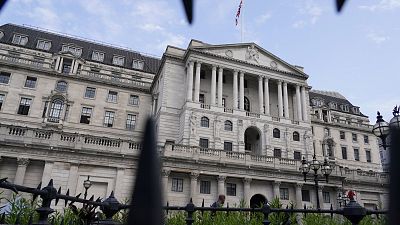Global markets will focus on key economic data from the major economies, including the Eurozone’s final GDP for the second quarter, Switzerland’s inflation and economic growth, and the US jobs data, which are set to shape financial markets’ future trends.
With central banks anticipated to implement rate cuts for the remainder of the year, the global economic outlook will be pivotal in shaping market expectations.
Last week, European markets continued their ascent towards new highs.
This week, investors will closely examine key economic indicators, including the final version of the second-quarter Gross Domestic Product (GDP) and employment change figures for the Eurozone, the non-farm payroll data for the US, and the Bank of Canada’s interest rate decision.
Europe
This week is expected to be relatively quiet on the economic front for the Eurozone.
The key releases will include the final versions of the manufacturing and services PMIs for August, second-quarter GDP growth and employment change for the region.
In the previous two estimates, the Eurozone economy grew by 0.3% in the second quarter, maintaining the same rate as in the first quarter, indicating a steady recovery pace in the first half of the year following two consecutive quarters of stagnation in the latter half of 2023.
Economic growth was particularly evident in major countries such as France, Italy, Spain, and Belgium.
However, Germany, the bloc’s largest economy, unexpectedly contracted by 0.1% in the second quarter due to ongoing constraints in the industrial sector.
Germany is also set to release its industrial production figures for July, with expectations that the country’s factory activity may have further declined from the previous month.
The final version of the GDP is expected to confirm the Eurozone's growth at 0.3%.
Preliminary data shows that the number of employed persons in the Eurozone increased by 0.2% in the second quarter, down from a 0.3% rise in the first quarter.
While the growth rate has remained relatively stable over the past few quarters, the labour market’s recovery indicates signs of stability following a surge in the post-pandemic period of 2022 and early 2023.
The final figures are likely to align with the initial estimate.
Additionally, Switzerland will publish its monthly inflation figures for August and its second-quarter GDP.
In July, consumer prices fell by 0.2% month-on-month, marking the first decline in eight months, while annual inflation remained at 1.3%.
The Swiss National Bank (SNB) has implemented two rate cuts this year, bringing its interest rate down to 1.25%, ahead of other major central banks, in response to rapidly cooling inflation.
Switzerland’s economic growth also shows signs of acceleration, with a year-on-year increase of 0.6% in the first quarter. Consensus forecasts suggest that the economy will continue to grow at a steady pace of 0.6% in the second quarter.
Inflation is anticipated to rise by 0.1% in August compared to July, which may encourage the SNB to continue its rate reductions.
The US
The upcoming release of the US non-farm payroll data for August will be crucial for market sentiment.
The labour market is one of the key indicators that the Federal Reserve (Fed) closely monitors when making decisions on interest rates.
The recent trend of easing employment and cooling inflation significantly strengthens the likelihood of a rate cut by the Fed in September.
In July, the US economy added 114,000 new jobs, which was much lower than expected, and the unemployment rate rose to 4.3%, the highest level since October 2021.
Additionally, wage growth also slowed more than anticipated. For August, it is expected that the US will create 163,000 new jobs, with the unemployment rate slightly decreasing to 4.2%.
In addition to the jobs data, the US will also release its ISM Manufacturing and Services Purchasing Managers' Indexes (PMIs), which gauge business activity across these sectors.
The manufacturing PMI contracted for the fourth consecutive month in July as high interest rates dampened demand, and consensus suggests this contraction may continue into August.
Meanwhile, the services sector returned to expansion in July after contracting in the previous month.
Canada
The Bank of Canada (BoC) is set to make its interest rate decision this week. Having implemented rate cuts for two consecutive months since June, the bank is expected to continue this trend.
Annual inflation cooled to 2.5% in July, marking the slowest pace since March 2021. The easing of consumer prices is likely to reinforce the bank's commitment to further rate reductions this year.
In addition to the interest rate decision, Canada will release its job data for July, providing insight into the country's labour market conditions.
The unemployment rate rose to 6.4%, the highest level since February 2022, following two consecutive months of negative employment growth in June and July.
This rise in unemployment may further influence the BoC's approach to monetary policy.
Asia Pacific
In the Asia-Pacific region, Australia's second-quarter GDP will be in the spotlight.
The country’s economy expanded by just 0.1% in the first quarter, as rising living costs and high levels of household debt weighed on consumer spending.
However, inflation remains above the Reserve Bank of Australia’s target, likely prompting the bank to maintain its “higher-for-longer” interest rate stance.
Consensus suggests that economic growth will slightly improve to 0.2% in the second quarter.















